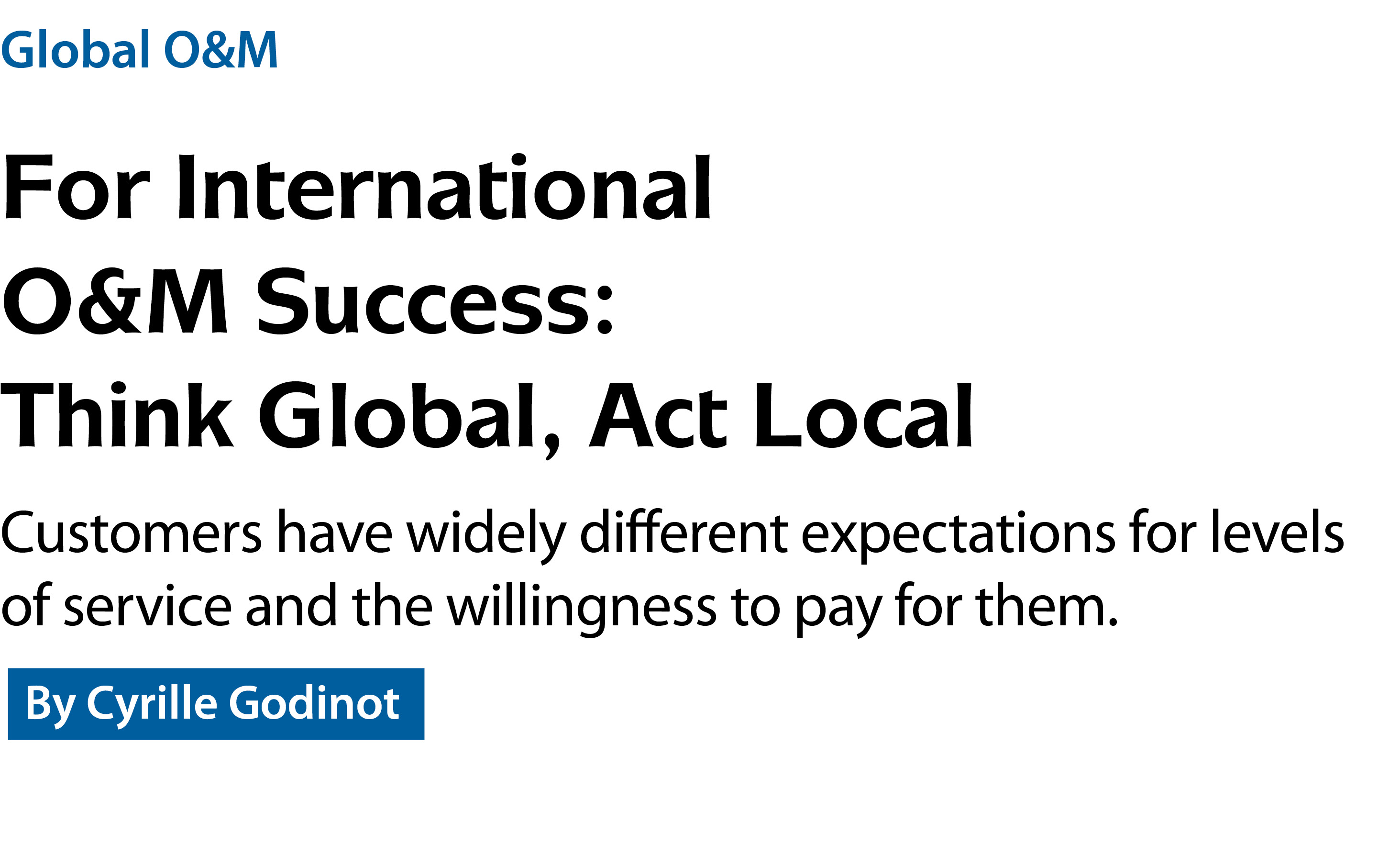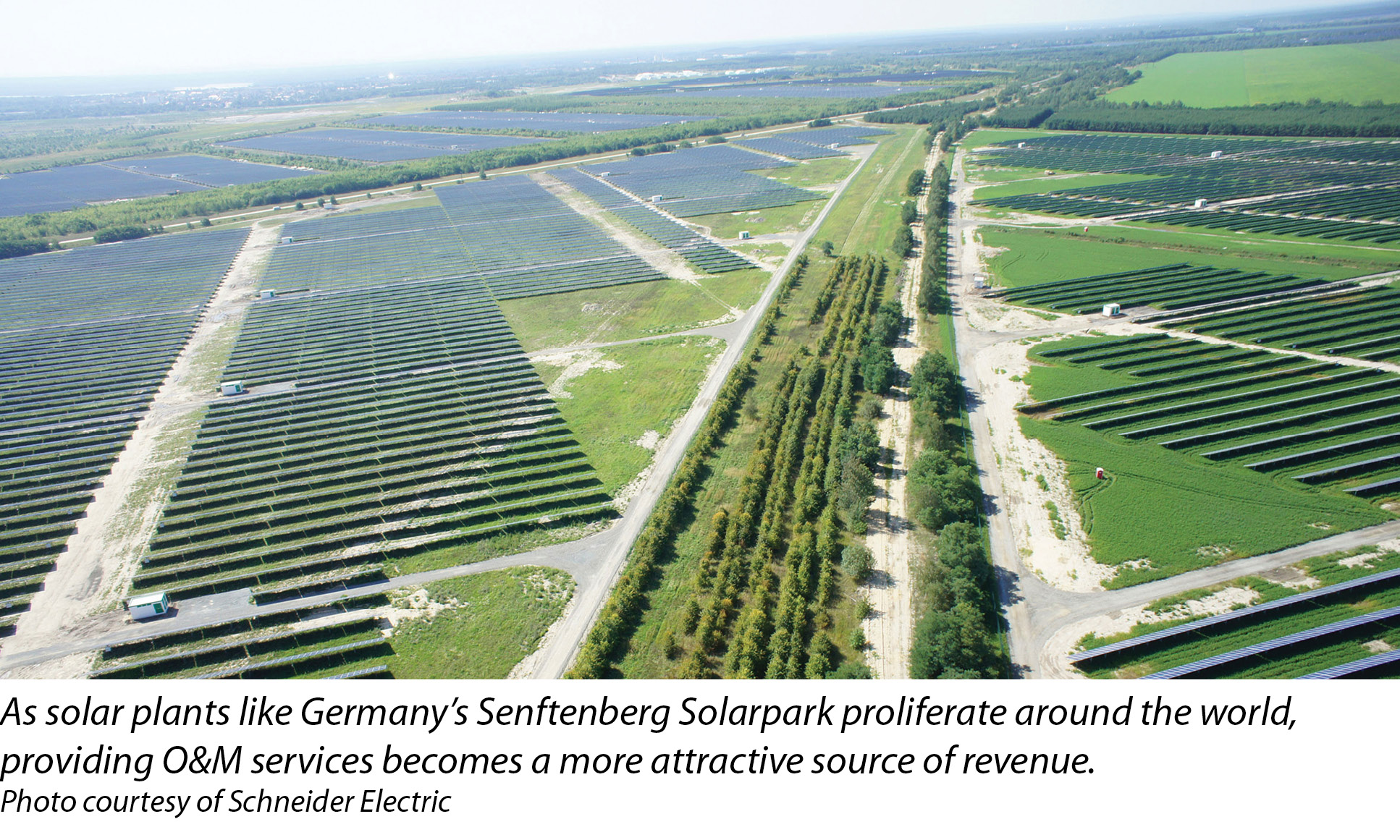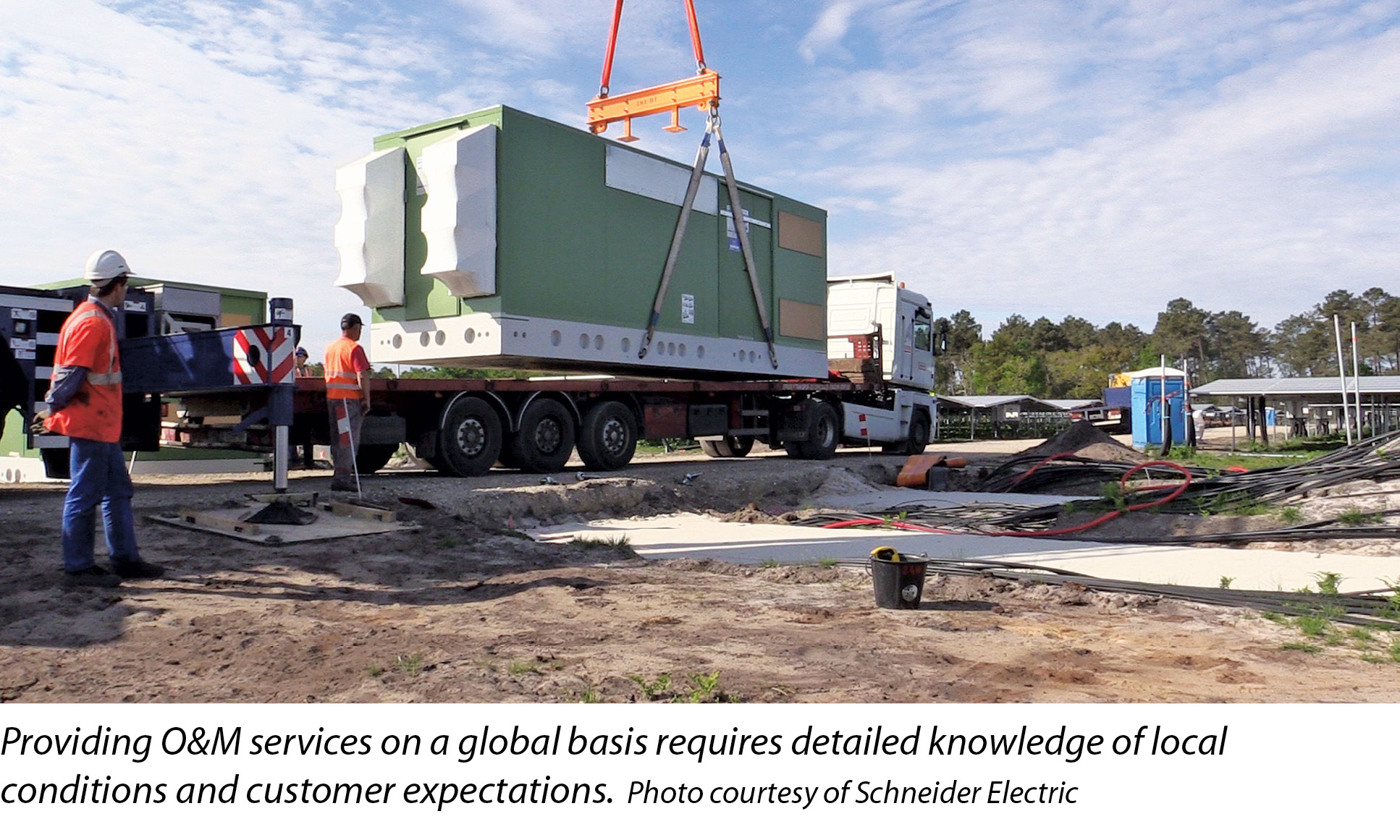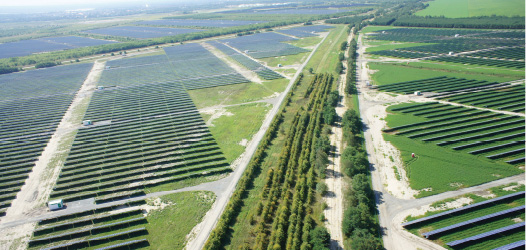

301 Moved Permanently
Serving the needs of solar power users around the world depends on investing effort into understanding a range of local factors and then tailoring products and services to meet those needs.
Companies striving to offer operations and maintenance (O&M) services on a global basis have to extend this “think global, act local” philosophy to a number of interrelated factors involving equipment, personnel training and interaction with customers.
This means that providers must resist the temptation to chase economies of scale by pushing “cookie-cutter” packages of equipment types and services. Instead, companies have to strike the right balance between economics and the conditions in particular markets.
Equipment and training
First and foremost is the need to choose the right equipment, given that each site is different. This sounds basic, but the fact is that in too many cases, overly complex equipment is chosen for sites that do not offer nearby support from skilled professionals. This means that nascent problems do not get noticed. Subsequent breakdowns result in power outages that are resolved only when a skilled technician can - eventually - be dispatched to the site.
In locations with easy access to skilled technicians, the high reliability of centralized inverters may make this technology a better choice. In remote sites, however, string inverters may be a wiser choice than central inverters. This is because if a string inverter goes down, it will only partially reduce the installation’s power output. Moreover, string inverters can be easily switched out and replaced with a spare.
There have been vast recent improvements in the computer-based simulation technology that is able to mimic field conditions in many activities, such as flying an aircraft, driving a vehicle and solar power plant O&M. This means that it is possible to develop training centers that provide real equipment and are set up so they re-create conditions that the trainees will encounter on the job. Problems and breakdowns can be simulated so that the trainees get hands-on experience.
Our company finds that it is important to offer this training in the trainee’s own language. Although we offer training videos and manuals, as well as online courses that can be accessed from any networked device, hands-on centralized training is an important part of giving staff the skills they need to keep installations humming along smoothly. This centralized training is followed by on-site training at the time of the installation’s commissioning.
Having skilled support staff available helps locally recruited O&M personnel deliver reliable power even in remote areas. Of course, experts can’t be everywhere at once.

Improvements in communications technology have been key in making remote diagnostics and troubleshooting possible. This has the huge benefit of enabling highly skilled professionals to stay in a central office and monitor the performance of installations in many places - allowing them to be alerted to problems before they become serious.
Service experts can also connect with local maintenance staff over a mobile phone link to provide support. In this way, the experts and local staff can talk through the problem, fix it and transfer skills at the same time. Field staff can also use a mobile device’s camera to show the problem to experts in a central office for faster diagnosis.
Experience shows that because locally employed staff are not working constantly on the equipment - if it is well configured, it should only go down rarely - they do not get much troubleshooting experience. This means that it is difficult to raise their skill level through experience. Having highly skilled, field-experienced staff at the head office that are able to help walk the local employee through the diagnostic and troubleshooting process is extremely valuable.
Global service, local expectations
It has been said that “all politics is local.” This applies to providing solar power O&M services, as well. The service offering must be tailored to the local needs, expectations and resources.
Some parts of the world have high service expectations. Japan, for example, has a culture that expects high reliability, and customers are willing to pay for a high level of service that meets those expectations.
Other parts of the world do not have the same expectations with regard to service. So, although the speed of service may be lower and, thus, the equipment may remain down for a longer period of time, customers in these areas are not necessarily dissatisfied with lower levels of service - it’s what they expect. However, this cuts both ways; they may also expect to pay a rate to match the service level they expect to receive.

Accordingly, a global O&M provider must first investigate the various local business cultures in which it will be operating. Service expectations may vary greatly even within a country, such as between rural and urban areas. With real local knowledge, O&M providers may then build a service offering that meets actual customer-level and pricing expectations.
In addition to service plans, there are also wide regional variations in a local customer’s ability and willingness to pay promptly. Also, there will be regulatory and financial issues that influence how an O&M contract is structured - such as under a power purchase agreement or feed-in tariff rate - particularly if an installation is connected to the grid to supplement other sources of power. Thus, the would-be provider must have thorough knowledge of operative contract law.
The amount of revenue that would be lost if a system goes down is based on the terms in the contract. If a contract is for $0.06/kWh, the power producer will be less willing to pay for a high level of service than if the contract were for $0.50/kWh. The value of the solar power may vary by the time of day and other factors, as well.
In areas where solar power is highly valuable, it might be best to install equipment that costs more but is highly reliable and have service technicians readily available. Then, charge an O&M contract rate that matches the service level.
Other unique local factors can easily catch an unwary solar power provider. In Spain, for example, the price available for electricity was recently reduced, although not by much. The big change was in the maximum amount of electricity that could be sold to the grid at a certain price. This means that whatever the scale of the solar resource is over the course of a year, a solar power company, essentially, has a capped maximum revenue. So, if the equipment goes down after that revenue has been earned, the customer is unlikely to be willing to pay to have the equipment restored to service promptly.
Elsewhere in Europe, the high prices originally paid for solar power resulted in a high motivation for solar power developers to keep reliability high. This came with a consequent willingness to pay for high levels of service. Reduction in solar power prices has meant that O&M contracts have had to adapt to less of a willingness by producers to pay for high levels of service.
It is clear that even if a company has a product that meets local certification requirements, there is much more to the issue of success on a global basis. Successful O&M contracts are far from a one-size-fits-all proposition. They should be developed only after careful investigation to find the right match between the company’s offering and the customer’s expectations and willingness to pay.
Global O&M
For International O&M Success: Think Global, Act Local
By Cyrille Godinot
Customers have widely different expectations for levels of service and the willingness to pay for them.


si body si body i si body bi si body b
si depbio
- si bullets
si sh
si subhead
pullquote
si first graph
si sh no rule
si last graph